- Home
- Patrick Robinson
Barracuda 945 (2003) Page 29
Barracuda 945 (2003) Read online
Page 29
"Do we go to the surface to check up on possible damage?"
"We never go to the surface, Ravi. Not until the day we exit the ship for good."
"But they might be sinking," replied Ravi.
"If they are, we shall do nothing to help them."
One month later, Captain Kuno would claim he saw their periscope, jutting out of the water.
Meanwhile, the Barracuda pushed on. Three hundred fifty miles of open ocean lay before them to the western point of the Aleutian Islands, which stream out in a narrow 1,000-mile crescent from the seaward tip of the Alaska
Peninsula, the great southwestern panhandle of America's largest state.
The Islands, which stretch more than halfway across the Pacific Ocean at that latitude, divide the Bering Sea to the north from the Pacific in the south.
Populated for some 9,000 years, they stand in some of the crudest winter weather on earth, valued principally as a storm-lashed natural outpost for the U.S. Navy, which guards the western approaches to Alaska and the coasts of both Canada and the United States.
In recent years, the level of military surveillance from the Aleutians has been increased tenfold with the rise to global importance of Alaskan oil. The great terminal of Valdez in Prince William Sound, with its huge storage capacity, its convoys of south-running VLCCs (Very Large Crude Carriers), and the new West Coast undersea pipeline, have turned it into a main cogwheel in the American economy. And it requires heavy protection.
With the President's insistence on less reliance on Arab oil, the estimated 16 billion barrels of reserves on Alaska's North Slope represent the very heart of White House policy. The United States owns enough oil on the freezing land south of the Beaufort Sea to replace all Middle East supplies for the next thirty years.
A minor problem has been the oil beneath the protected acres of the sensitive Arctic National Wildlife Refuge. There has been a certain amount of protest from a tribe of native Indians, who fear new drilling may drive away migrating deer—never mind the irony that they hunt the deer from the back of gas-guzzling snowmobiles, with high-powered rifles.
No matter. The Republican Administration of the early twenty-first century, ignoring the tree huggers, greens, wets, and other romantics of the environment, believed that most Americans think inexpensive and plentiful energy comes with Liberty, and will put up with some damage to the near-deserted wilderness of Alaska in order to get it. Yessir.
If the Administration harbored any doubts, the events of September 11, 2001, dismissed them all, in a major hurry. The prospect of the United States economy operating almost entirely on oil owned by Abdul, Ahmed, and Mustapha was plainly out of the question.
The President, backed by trusted advisers, some of them dyed-in-the-wool oilmen, called immediately for increased energy production. The Democrats did not like it, neither did the Eskimos, nor presumably the migrating deer, but a frenzy of new drilling was unleashed, most of it on government land, which included 86 percent of all oil exploration in Alaska.
By the end of the year 2006, a brand-new pipeline was close to completion, right across Alaska, following for much of its 800-mile journey the route of the old Trans-Alaska Pipeline System (TAPS). For decades, this has carried crude-oil from the vast, 150,000-acre Prudhoe Bay Field in the north, to the giant Valdez Terminal, in the south, on the shores of Prince William Sound, 120 miles east of Anchorage, as the crow flies.
The new pipeline, the Alaska Bi-Coastal Energy Transfer (ABET) has been built on the same lines, a zigzag formation that allows it to withstand enormous stresses, because the aboveground pipeline contracts and expands as the tundra melts and then freezes. Both lines cross the mountain ranges of the Brooks, the Alaska, and Chugach, plus thirty-four rivers and streams, including the Yukon, Tanana, and Chena rivers.
The pipes are highly visible, crossing tremendous areas of wasteland, each section holding 840,000 gallons of oil, held at bay by the massive strength of the jet black, four-foot-wide, galvanized steel transport system. The two pipelines diverge shortly before reaching Valdez, the new one cutting left, through the south foothills of the Chugach Range, to the new transfer terminal in Yakutat Bay.
There the crude is pumped into the brand-new undersea pipeline system which, from the winter of 2007, ran from the south shore of Alaska down to the Queen Charlotte Islands, 600 nautical miles south just off the coast of British Columbia in relatively shallow water. That was only half of its underwater journey. The rest took it down the coast, past Vancouver Island, and into American waters off the shores of Washington State, and the only deepwater port in that State, that of the ten-mile-long Grays Harbor.
These increasingly busy sea-lanes, 100 miles south of the Canadian border, are now known as the Coastal Super Corridor, the West Coast's newest hub for business and international trade. Grays Harbor represents an outstanding confluence of road, rail, and marine transport routes, northeast to Seattle, south to Portland and California.
Its new status had prompted the Republican White House to force through a bill that allowed the construction, deep in the harbor, of a new refinery to handle the incoming piped crude from Yakutat. It was built, using every possible modern technique, on the south shore, two miles from the sprawling port of Aberdeen, a town of 17,000 citizens, now joined in an urban sprawl to its neighbors, Cosmopolis and Hoquiam.
The oil refinery was making a lot of people very rich. And the VLCCs were coming in line astern to Grays Harbor, loading up with refined crude oil, and then turning south again, down the coast to the Panama Canal and America's giant oil distribution system on the north coast of the Gulf of Mexico.
Perhaps, even more importantly to the new boom towns at the head of Grays Harbor, was the Canadian Pacific Railroad, which brought colossal tankers rolling stock right into the refinery before running south for 900 miles, to yet another massive, new U.S. Government initiative, the biggest electricity-generating power station in the country, Lompoc, California.
This towering construction was christened Superpower West. It is the mighty plant built on the express orders of the President, to end forever the constant power cuts, which had been erratically blacking out parts of California for several years. Superpower West, solely reliant on Alaskan oil, was born to take the pressure off the other fifty main California generating stations. It was born to light up, exclusively, the cities of San Francisco and Los Angeles.
It was into this multibillion-dollar power grid, stretching from the first snowy American soil halfway across the Pacific, to the very last hot, dusty U.S. acres on the Mexican border, that Ravi Rashood and Ben Badr were now headed.
The Barracuda was out in open water now, running deep, east southeast from the incident with the fishing boat. Captain Badr held her speed at fifteen knots, 500 feet below the surface, heading toward the Kamchatka Basin, where the ocean shelves go down to depths of almost two miles.
The Commanding Officer was trying to run the ship as if it were a part of someone's Navy, but they still had an unresolved, life-and-death navigation issue—whether to take the shorter route along the south side of the Aleutians, or to take the route north of the islands and try to duck back south through the Unimak Pass at the far eastern end of the chain.
No modern Navy would dream of allowing the matter to be a subject for discussion during the voyage. All routes and objectives would have been signed, sealed, and delivered in orders long before departure. Even in Special Ops. But this was, in the end, not a Navy. The Barracuda was staffed with professionals and experts, on all decks, but the mission was unorthodox and may need refining, like the Alaskan oil, during its long journey.
It was Lt. Comdr. Shakira Rashood who was waving a red flag, casting grim and academic doubts on the wisdom of taking the short route south of the islands.
She was not being dogmatic, or even insistent. But she was saying to the CO, and the Navigation officer, and indeed to her husband, "If I were an American, I would have a patrol submarine, right there, moving a
long the northern edge of the Aleutian Trench over that very deep water. . . Right here. . . Look . . . Where it's over three miles to the seabed."
Ben Badr plainly found this an extremely difficult exchange, since he was unused to being questioned in his own ship, particularly by a woman, whose species he had never even seen in a submarine. But Shakira had spent months studying charts of the area, and gleaning information off the Internet from defense papers and Pentagon data.
Ben knew she would be unlikely to speak out, unless she knew a great deal about the subject. He bit the bullet, smiled, and told Ravi he had a very learned wife, which defused the situation and allowed Ben to avoid a direct confrontation with a lady, 500 feet below the surface.
Ravi, too, had studied the charts with Shakira. In fairness, he was in two minds about the best route past the Aleutians. However, the chart he and the navigator now studied with the Commanding Officer was not so full of information as Shakira's, whose main concern had been with American surveillance.
"For what it's worth," she said, "I have seen a pattern of more and more precautions being taken by the U.S. Navy. For instance, immediately after September 11, they stepped up security around the Valdez Terminal, and they are still running Naval patrols a mile out of Prince William Sound. I don't know if those patrols include submarines, but it is my opinion, the U.S. Navy would sink any interloper detected in those waters. Just imagine a foreign submarine creeping around in the waters near the very heartbeat of their West Coast economy. Trust me, they would not hesitate to open fire."
General Rashood looked carefully at the chart, and then said simply, "OK, Lieutenant Commander, why the north route?"
"Well, if you take Attu Island, the first place we come to, the chart marks an air reconnaissance post just to the east. Remember, this is the very tip of the islands. I would be amazed if there was not a Loran Station, a proper U.S. Naval facility somewhere on that coastline. It may be a straightforward radar station, or even a SOSUS processing unit. Either way, it will look like a cowshed, or reindeer shed, and either way, they could hear us come by. The water's shallow to the south, and noisy, but we don't want to go that way."
Ben Badr nodded in agreement. "Well," he said, "it's certainly a lot deeper to the north. The seabed falls away right offshore to two miles deep, and it stays that way for a couple of hundred miles." He and Ravi stared at the chart, looking at the distinctive soundings that lay to the south, where the ocean floor shelves steeply down into the Aleutian Trench, which in places is four miles deep.
"I doubt there's SOSUS, not right down in the trench," said Ben. "And I agree with Shakira. All the signs are there for a U.S. Navy listening station right here—173' E 53' N.
"And I agree there is a very good chance of a U.S. submarine patrol to the south. Come here, Ravi . . . and Shakira. Let me show you a slightly bigger scale chart."
He produced a large white, blue, and yellow chart, which showed the ocean well south of the Aleutians, the sprawling undersea area known as the Great Pacific Basin.
"This large plateau," he said, "is loaded with U.S. SOSUS surveillance, which means we cannot go anywhere near it. But since we have to move from one end of the Aleutians to the other, we have to go somewhere. Now look at these depths here. . . All through the Basin, for miles and miles, north, south, east, and west, we're looking at 5,000 meters. The whole place is lethal. Because during the Cold War the Americans were paranoid about Russian submarines crossing that stretch of the Pacific into American waters.
"And you both know the Americans. When they want something, they make sure they get it. What they got here was an impenetrable area, in which no one could move without U.S. surveillance picking them up instantly. What they could not do was operate the same system to the north, close in to the islands.
"Here . . . look at these depths. Heading north from the Basin, we move into a sudden decline, where the seabed reaches a kind of cliff edge and then plunges rapidly down to depths of over 7,000 meters, and stays there for several miles.
"Then," he continued, "right here, still heading north, over the deepest part, the ocean floor starts to rise steeply . . . here. . . 6,000. . . 5,000. . . 4,000. . . 3,000. . . 2,000. . . then 1,000 . . . then way under, 500 feet. . . three hundred off Attu Island. We just crossed a very large ditch, the Aleutian Trench. It's the one place the U.S. Navy cannot operate SOSUS. It's too deep, too steep. The U.S. equipment on the great plateau of the Basin cannot see across the ditch."
"I know it can't see across, but why can't it?" asked Shakira.
"The undersea cliffs are too steep. SOSUS does not like looking up walls," replied Ben. "And that's why they almost certainly have a submarine patrol in there. If you've got billions of dollars' worth of equipment guarding your western approaches, you wouldn't begrudge yourself a nuclear submarine to try and make it foolproof, would you?"
"I guess not," said Shakira.
"And where does that put us, in your estimation?" asked Ravi.
"It puts me right with Shakira's original argument, that it would be folly to try to run south of the Islands, because we'd almost certainly get detected by any U.S. submarine that happened to be in the area. They may not catch us, but they'd sound an alarm that would be heard all the way to the Pentagon. And I don't think we'd like that very much."
"There could even be two submarines in there," said Ravi, thoughtfully.
"I would not disagree with that either," said Ben. "Because even if they have SOSUS arrays on the ocean floor inshore, from eighty miles all the way to the beach, it's awfully difficult to listen 'uphill,' especially out here."
"How do you mean?" asked Ravi.
"Well, in this area, coming from the Basin up to the Trench, there are some huge swells, which have been building for a thousand miles. The weather is bad, force eight-nine gales, pretty big seas. There's a ton of noise from the sea hitting the underwater cliffs. A lot of turbulence, water bouncing around, strong currents sluicing in and out of deep underwater holes.
"This is bloody awful antisubmarine country. There's cold water running past the islands from the north, warm from the south, forming marked thermoclines. It's appalling for SOSUS, and a whole lot easier to simply put a patrol in there, right in the middle. If I were in charge of U.S. surveillance I'd have a patrol right here, at 51.10' N 179' E, off the island of Amchitka. I'd probably have an air patrol lurking around as well, just in case we found something and wanted to force it to the surface."
"You mean it could be just one submarine, or maybe even two?" said Shakira.
"Correct. But everything is telling me we want to stay out of the south."
"That's what it was telling me," said Shakira. "And I only have about one hundredth of your knowledge."
"Agreed?" said Ben.
"Absolutely," said Ravi. "We'll take the north route."
"Meanwhile, can someone give me the latest on the U.S. Loran stations, so I can fill my chart in?" said Ben.
"Well, I don't have that much," Shakira replied. "But I've entered everything I found. There's something definite for Attu Island, and I also had a mark on Amchitka. That's about 240 miles east of Attu, next to the wide seaway here . . . right through the islands."
"Got it," said the CO. "We'll be way north of there, in water a mile deep. Here, just north of this sandbank—the Petrel Bank, it's called—there's only one hundred feet in the middle, another forty miles east."
"OK," said Shakira, "I have a definite U.S. Naval facility on Atka Island, 52.30' N 174' E. And a possible, another couple of hundred miles on, Chuginadak Island. Not definite, just possible. Then I have two definite U.S. Naval facilities—one on Umnak Island, right here . . . the other on Unalaska."
"I can see four flashing beacons in this group," said Ben. "If we can see them through the periscope, we're probably too close."
"I realize this sounds a little naive," said Shakira. "But somewhere, somehow we have to cut through the islands, from the the northern route back into the southern, r
ight? Has anyone thought of where we might do that?"
"I have," said Ravi. "I'm not enough of a Naval Officer to select the correct side of the Aleutians to take a submarine, but I am enough of a Military Officer to realize that if we go north, we must eventually come south again. The main route for cargo ships is through the fairly busy Unimak Pass. I took the trouble to get hold of a very detailed chart on the area, better than anything we've seen so far."
"I'm glad you did that, Ravi. I have good charts, but not excellent ones," said Ben. "And when we cut through the Aleutians, we must be very careful. If we're going to be detected anywhere, it'll be in there, surrounded by U.S. radar and sonar, and unknown SOSUS cables."
"Better that than a big armed Los Angeles Class nuclear ship," replied Ravi. "Because that American bastard will probably open fire on sight."

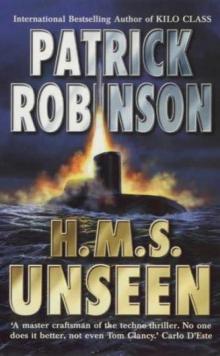 H.M.S. Unseen am-3
H.M.S. Unseen am-3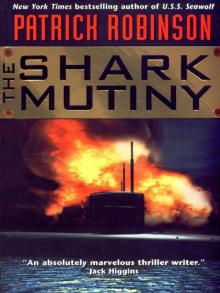 The Shark Mutiny (2001)
The Shark Mutiny (2001) Hunter Killer am-8
Hunter Killer am-8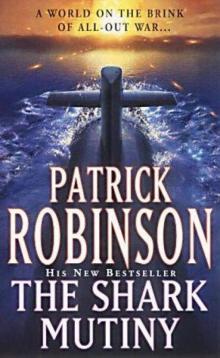 The Shark Mutiny am-5
The Shark Mutiny am-5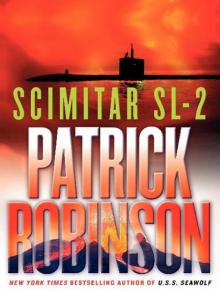 Scimitar SL-2
Scimitar SL-2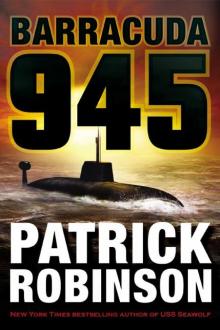 Barracuda 945 am-6
Barracuda 945 am-6 Hunter Killer
Hunter Killer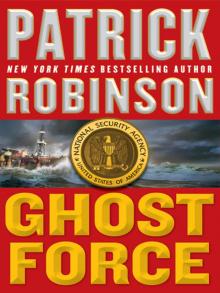 Ghost Force
Ghost Force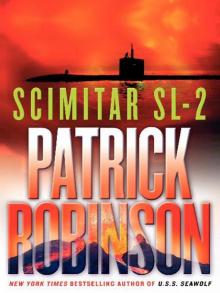 Scimitar SL-2 (2004)
Scimitar SL-2 (2004) Kilo Class am-2
Kilo Class am-2 The Lion of Sabray
The Lion of Sabray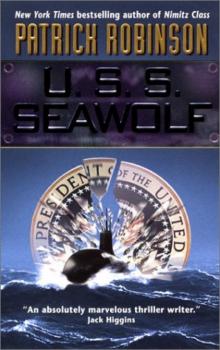 U.S.S. Seawolf am-4
U.S.S. Seawolf am-4 Ghost Force am-9
Ghost Force am-9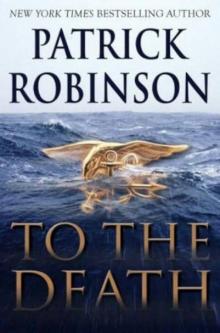 To the Death am-10
To the Death am-10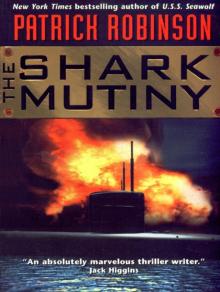 The Shark Mutiny
The Shark Mutiny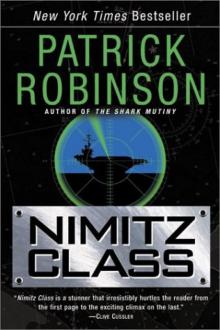 Nimitz Class am-1
Nimitz Class am-1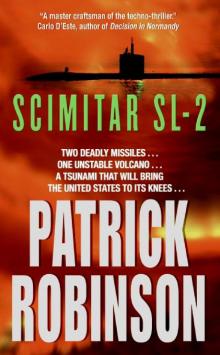 Scimitar SL-2 am-7
Scimitar SL-2 am-7 Barracuda 945
Barracuda 945 Intercept
Intercept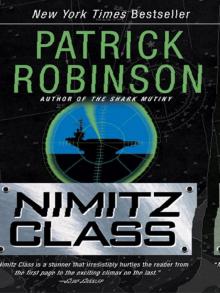 Nimitz Class (1997)
Nimitz Class (1997)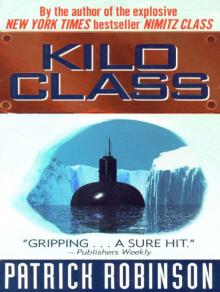 Kilo Class
Kilo Class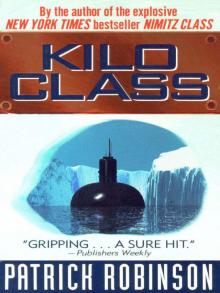 Kilo Class (1998)
Kilo Class (1998) Diamondhead
Diamondhead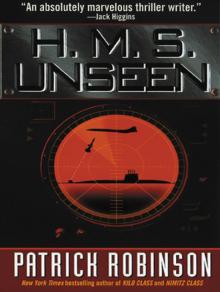 H.M.S. Unseen
H.M.S. Unseen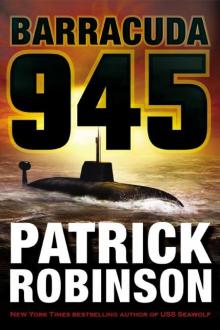 Barracuda 945 (2003)
Barracuda 945 (2003)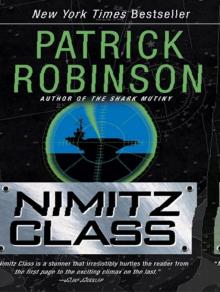 Nimitz Class
Nimitz Class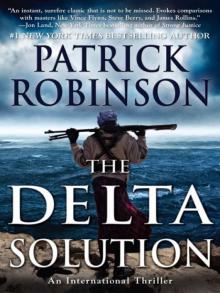 The Delta Solution
The Delta Solution U.S.S. Seawolf
U.S.S. Seawolf